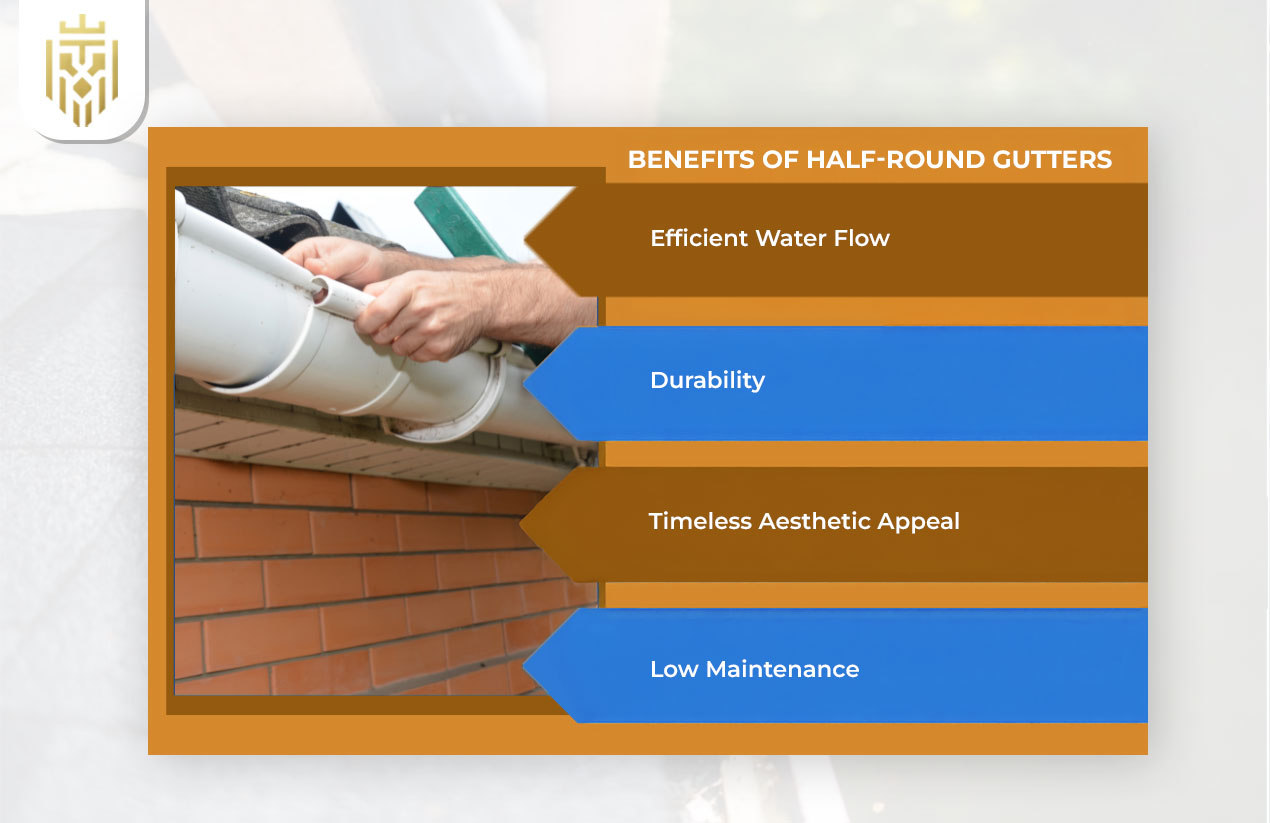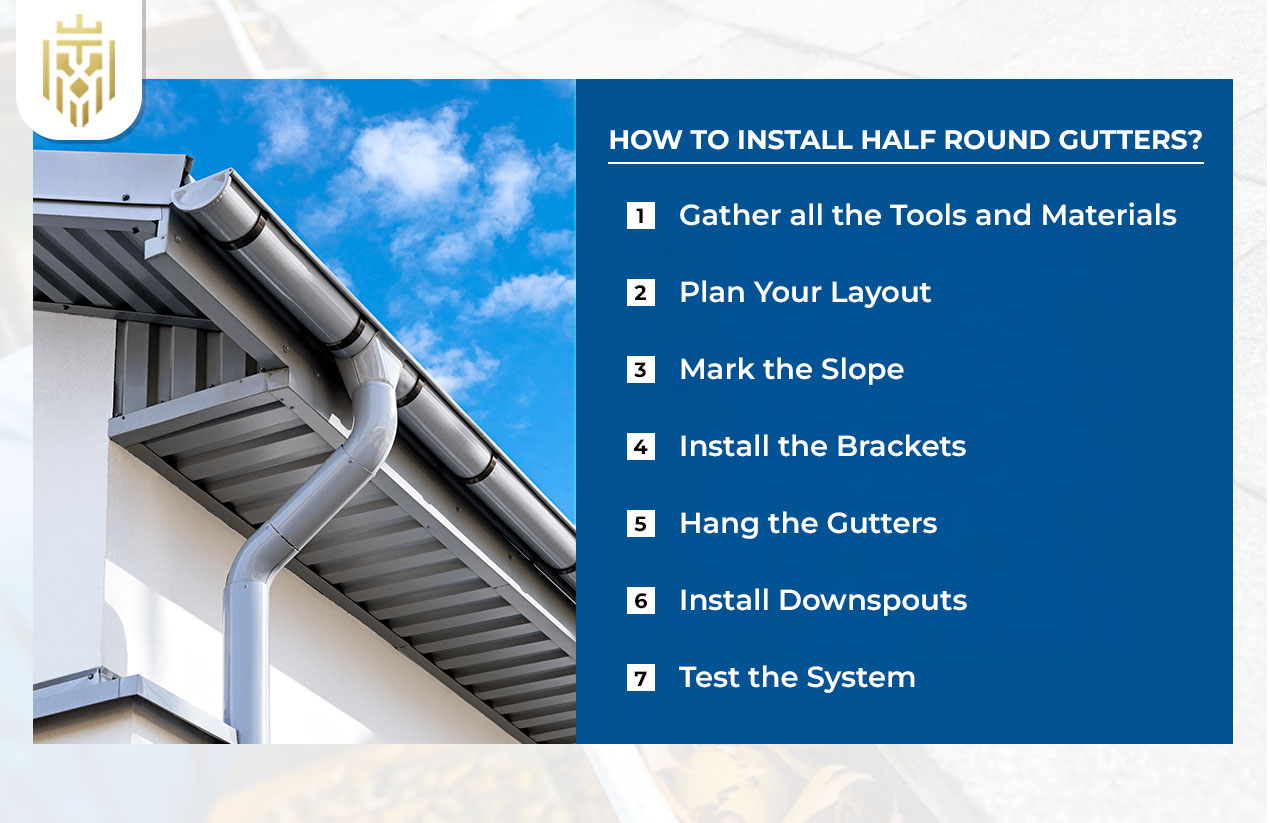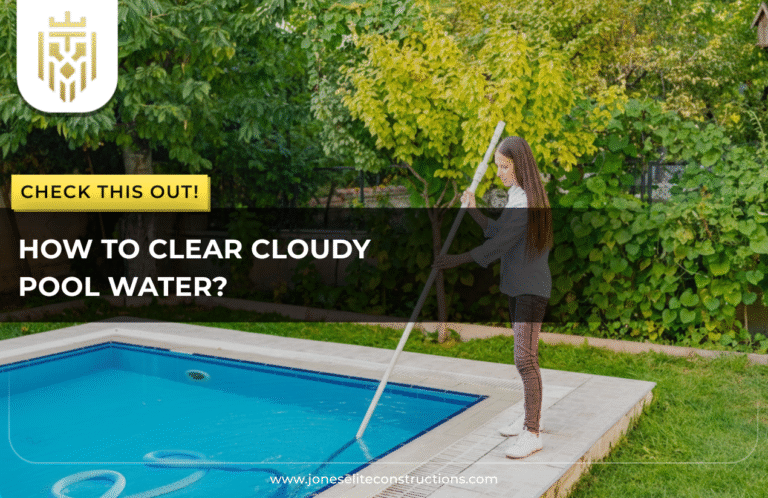What Are Half-Round Gutters?
Half-round gutters are curved gutters designed to collect rainwater and funnel it down through downspouts. Their curvature encourages water to move freely and limits the collection of debris. While their shape is traditional, they are increasingly being used in contemporary construction because they merge strength with a timeless beauty.
Copper, aluminium, galvanized steel, and zinc are all materials from which half-round gutters can be crafted. These materials ensure that the gutters are an investment in the long-term defense of the property against water erosion while also genuinely improving the look of the property for the reason that they offer a classy and polished finishing touch.
Benefits of Half-Round Gutters

Choosing the right gutter system is essential for protecting your property from water damage. Half-round gutters bring together practicality and style, offering several distinct benefits.
Efficient Water Flow
Semi circular gutters are effective in water drainage, as the rainwater has no sharp bends to navigate, and, therefore, water can flow straight over the corners. This shape minimizes the chances of water getting collected and eventually results in a reduced chance of overflow.
Durability
Gutters of this kind are generally constructed out of either copper, aluminium, or galvanized steel, all of which are known to be resistant to rust and damage. If maintained, half-round rain gutters can withstand even several decades of usage, even in less friendly environments.
Timeless Aesthetic Appeal
The curved design of semicircular gutters is one of the hallmarks of old-fashioned design and is often utilized in more classy structures. They add further visual appeal to the structure’s exterior and can be used together with much older or more recent formats of design.
Low Maintenance
Semicircular gutters have a smooth interior surface, which makes it impossible for leaves, twigs, or dirt to get stuck to the surface. This minimizes the number of times the gutters have to be cleaned, along with the possibility of damage due to blockages.
Difference between Half-Round Gutters and other gutters
Gutters come in a variety of styles, and each has unique features that impact function and appearance. Here’s how half-round gutters compare to other popular types.
Half Round vs. K Style Gutters
The K-style gutters have a flat bottom with angular sides, which allows them to carry more water. Half-round gutters cater to an older style that is simpler to work with and maintain and is less likely to rust. Half-round gutters also provide a softer, more traditional aesthetic.
Half-Round vs Box Gutters
Box gutters are integrated with the roof and are not visible. This gives an uninterrupted look, but unlike box gutters, half-round gutters can be easily installed, accessed, and maintained without the need for structural modifications.
Half-Round vs Fascia Gutters
Fascia gutters serve the dual purpose of a gutter and a fascia board, giving a smooth, put-together look. On the other hand, half-round gutters are standalone systems and are easier to fix or replace should a part get damaged.
How to Install Half Round Gutters?

Proper installation is key to ensuring half-round gutters function effectively and last for years. Following the right process helps maintain correct water flow and prevents future issues.
Gather all the Tools and Materials
Start by gathering the cover sections, supports, hangers, measuring tape, drill, UR, hacksaw, and sealant tape together. You minimize distractions and save time when you have everything set.
Plan Your Layout
Having a planned layout of your system not only speeds up the work, but it also allows for the safe diversion of the rain shield away from the foundation.
Mark the Slope
A gradient of about 1/4 inch over a span of 10 feet is to be set on the fascia. This gradient helps gutters to direct water to the downspouts without retaining any water.
Install the Brackets
Keep the fittings of the gutter spacers balanced along the gradient. The fittings need to have the right balance so that the spacers don’t sag when they fill with water.
Hang the Gutters
Attach the half-round gutters to the spacers. Ensure that each connection is properly sealed and the terminations are well sealed. Proper joint sealing prevents water leaks and ensures smooth water flow.
Install Downspouts
Install the downspouts to the marked water discharge points so as to keep the water away from the house foundation. Verify that the lower ends are also routed to safe water discharge points.
Test the System
Pour water into the gutters to check for leaks and confirm smooth flow. Testing allows you to fix any issues before the system faces heavy rain.
Maintenance Tips for Half-Round Gutters

Even though half-round gutters are low-maintenance, regular care enhances their longevity and performance. Here are key upkeep practices.
Clean Gutters Regularly
Remove leaves and other materials at least twice a year to reduce the risk of blockages. If your property is close to trees, more frequent cleaning may be necessary.
Inspect for Leaks and Damage
Identify any rusted areas, loose joints, or cracks during inspections. Repairs of small damages in early stages prevent higher costs later in the process.
Check Brackets and Hangers
Make sure the brackets are firmly secured to the fascia. Sagging can be caused by loose brackets, and this hinders proper drainage.
Maintain Downspouts
Open up the downspouts with water so any concealed blockages can be removed. Clean downspouts make sure water is removed from your property.
Prevent Ice Dams in Winter
For colder regions, heat cables can be used to prevent insulation from allowing ice buildup. Ice dams can inhibit the flow of water and cause damage to the roof.
Install Gutter Guards
Installation of gutter guards ensures less debris enters the gutters. This not only reduces maintenance needs but also preserves the flow of water.
FAQs
1) What are half-round gutters?
Half-round gutters refer to semi-circle shaped channels that collect rainwater and drain it into downspouts. They provide an elegant design, durability, and smooth flow.
2) How to install half-round gutters?
First, plan the layout. Then mark the desired slope, attach brackets, and fit the gutter sections. Next, add downspouts and test the system. Make sure to follow each step properly for efficiency and durability.
3) What are the benefits of half-round gutters?
The main benefits are the perennial flow of water, durability, low maintenance, and the classic look that increases the curb value of the house.
4) What is the difference between half-round and K-style gutters?
While K-style gutters are designed to hold more water with their angular structures, half-round gutters offer a timeless look, are easier to clean, provide softer aesthetics, and are more corrosion resistant.
5) What are the common materials for half-round gutters?
They can be made from zinc, copper, aluminium, or even galvanized steel. Each material differs in cost, look, and durability, which is why clients can decide what fits their budget and style the best.









